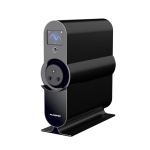A liquid chromatography-mass spectrometry workflow for in-depth quantitation of fatty acid double bond location isomers
Tracing compositional changes of fatty acids (FAs) is frequently used as a means of monitoring metabolic alterations in perturbed biological states. Given that more than half of FAs in the mammalian lipidome are unsaturated, quantitation of FAs at a carbon-carbon double bond (C=C) location level is necessary. The use of 2-acetylpiridine (2-acpy) as the charge-tagging PB reagent led to a limit of identification in the subnanomolar range for mono- and polyunsaturated as well as conjugated FAs. Conjugated free FAs of low abundance such as FA 18:2 (n-7, n-9) and FA 18:2 (n-6, n-8) were quantified at concentrations of 0.61 ± 0.05 and 0.05 ± 0.01 mg per 100 g in yak milk powder, respectively. This workflow also enabled deep profiling of eight saturated and 37 unsaturated total FAs across a span of four orders of magnitude in concentration, including ten groups of C=C location isomers in pooled human plasma. A pilot survey on total FAs in plasma from patients with type 2 diabetes revealed that the relative compositions of FA 16:1 (n-10) and FA 18:1 (n-10) were significantly elevated compared with that of normal controls. In this work, we have developed a workflow for global quantitation of FAs, including C=C location isomers, via charge-tagging Paternò-Büchi (PB) derivatization and liquid chromatography-tandem mass spectrometry (LC-MS/MS).
- This study introduces a liquid chromatography-mass spectrometry workflow with using 2-acetylpyridine-based Paternò-Büchi derivatization for global quantification and quantitation of fatty acids (FAs) C=C location isomers.
- This workflow allows for an in-depth profiling of 45 saturated and unsaturated FAs across four orders of magnitude in concentration from human plasma, and even low abundance conjugated free FAs from yak milk.
- It reveals altered levels of specific C=C isomers in human plasma from type 2 diabetes patients, demonstrating its potential for research in metabolic diseases.
J Lipid Res. 2021:62:100110. (IF: 5.0)


